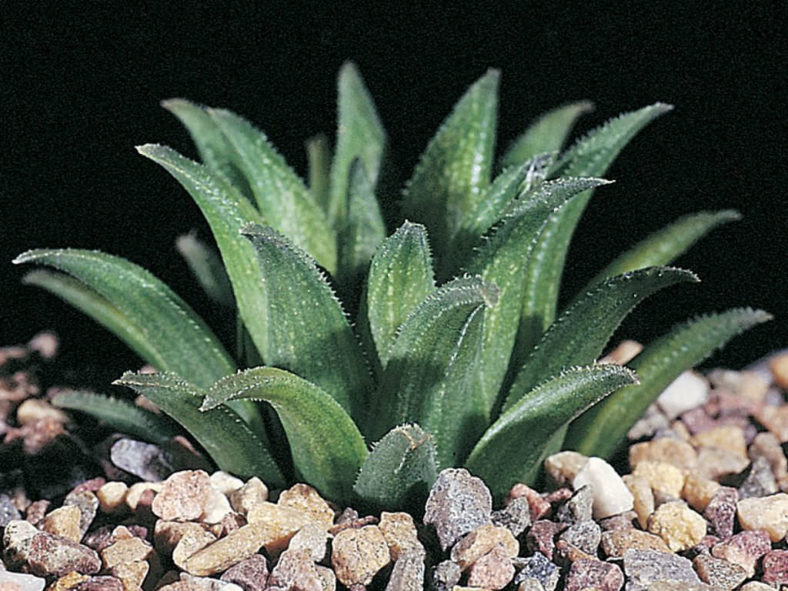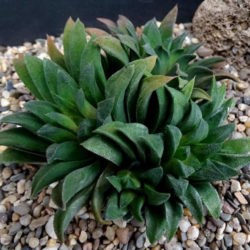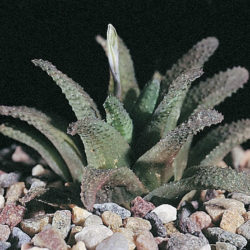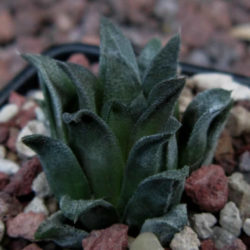Scientific Name
Haworthia floribunda var. dentata M.B.Bayer
Synonym(s)
Haworthia dentata, Haworthia parksiana var. dentata
Scientific Classification
Family: Asphodelaceae
Subfamily: Asphodeloideae
Tribe: Aloeae
Genus: Haworthia
Description
Haworthia floribunda var. dentata is a small interesting succulent that forms rosettes of dark green, slightly scabrid leaves with spined margins. It is the smallest variety of Haworthia floribunda. The rosettes can reach a diameter of 1.2 inches (4 cm).
The greenish-white flowers appear on simple, up to 10 inches (25 cm) long stalks, usually from late winter through spring.
Origin
Haworthia floribunda var. dentata is native to South Africa. It occurs from Bontebok National Park to the northwest of Riversdale in the Western Cape province.

Hardiness
USDA hardiness zone 10a to 11b: from 30 °F (−1.1 °C) to 50 °F (+10 °C).
How to Grow and Care
These succulents are not considered difficult houseplants to grow. If you can keep a pot of Aloe alive on a windowsill, chances are you can do the same with a dish of Haworthia. As with all succulents, the most dangerous situation is too much water. They should never be allowed to sit in water under any circumstances. At the same time, these little decorative plants can be grown in interesting containers such as teacups and even miniature baby shoes. If you're given a Haworthia in such a container, make sure the container has adequate drainage.
Haworthias are small, usually between 3 and 5 inches (7.5 cm and 12.5 cm) in height, and relatively slow-growing. Therefore, they are often grown in small clusters in wide, shallow dishes. Over time, clusters will naturally enlarge as the mother plant sends off small plantlets. When the cluster has outgrown its dish, repot into a new wide and shallow dish with fresh potting soil in the spring or early summer. This is also the time to take offsets for propagation.
See more at How to Grow and Care for Haworthia.
Links
- Back to genus Haworthia
- Succupedia: Browse succulents by Scientific Name, Common Name, Genus, Family, USDA Hardiness Zone, Origin, or cacti by Genus
Photo Gallery
Click on a photo to see a larger version.


